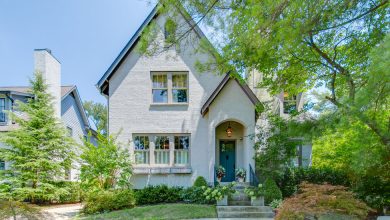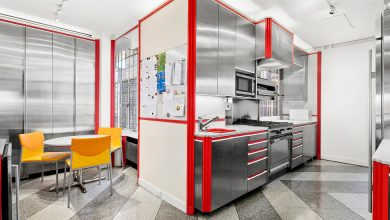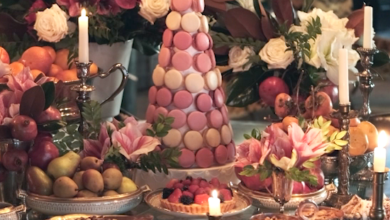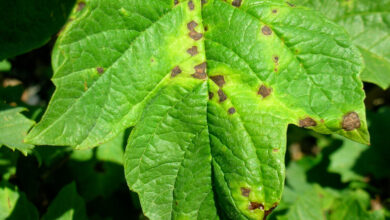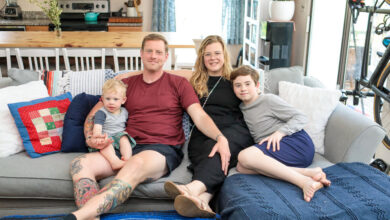A Garden at Ground Zero
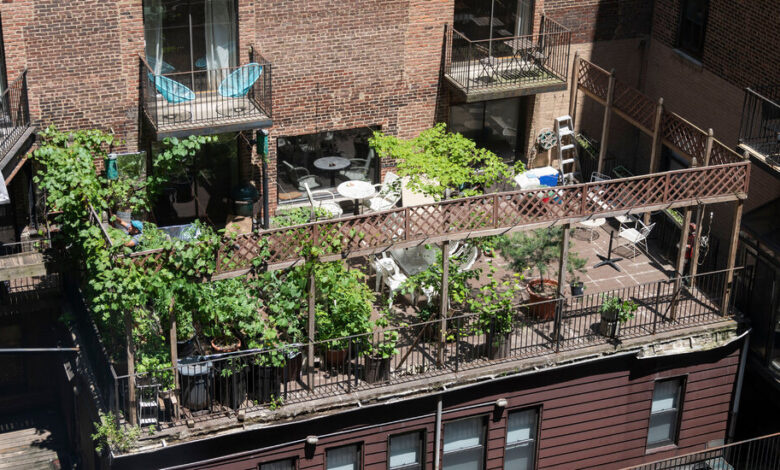
My partner, Esther, likes to say that she bought our financial district apartment right after 9/11 with the idea that someone would come along and make the terrace work. When I moved in a few years later, I was ecstatic. “I’ll make a garden,” I thought at the time. “What could go wrong?”
A lot, it turns out. The 800-square-foot parapet, which sits 10 floors above Broadway, cater-corner from ground zero, is a surprisingly inhospitable place. The Federal Reserve Bank of New York just east of us robs us of the morning sun while a 54-story building clad in Darth Vader black sucks the daylight out of our afternoons.
And though its 800 square feet seems like it could accommodate a lot of salad, only the easterly side gets enough light to underwrite a crop of significance. This is also the side that is most exposed to what my neighbor Mark Bower liked to call “a harsh, Siberian wind” — a distinctly un-zephyrus gustiness that punishes anything that dares to sprout. On top of that, whenever a New York sports team wins a championship, the ensuing parade down the Canyon of Heroes blankets us in ticker tape. For years I pulled strips out of the compost from when the Giants beat the Patriots in the Super Bowl in 2012.
But in high summer, between the hours of 11 and 2 there is light — “A little flower between two abysses,” as Liszt said of the second movement of Beethoven’s Moonlight Sonata. Making that little flower grow a little bigger has been my obsession for the last 16 years.
The first step in getting to my own idea of a garden at ground zero was getting past my neighbor Mark’s idea of one. This was a considerable redirection. Mark, a hard-nosed personal injury lawyer, had gotten in on the ground floor, so to speak, when our building was transformed from a commercial phone company to a co-op in 1979. He had badgered the board and gotten permission to renovate and tile what had been a tar paper affair and transformed it into a railed and up-to-code outdoor space.
Throughout the 1980s it was party central. Some of the original cast of Saturday Night Live was said to have made an appearance. Years later, in the weeks after 9/11, Mark had shoveled three feet of World Trade Center debris from the terrace with his own two hands. Ever since, he’d been nurturing the garden as an explosion of flowery rebirth. Pansies, marigolds, lilies, lupins. That was Mark’s thing. But my thing was vegetables, and I told him so when I moved in. “Go ahead and try,” he said, “but I’m telling you, there’s not enough light.”
Mark’s strategy, like the Giants offense, had been to flood the zone. Every May we’d go out to a nursery in New Jersey and drop a thousand dollars or so on potted flowers. By September they’d be dead, or dying. The rest of the year gloom descended. The sun disappeared from the horizon in deep winter and then we’d wait, Druid-like, for it to appear again in March, rising first in the gap between the Fed and the National Debt Relief building. It was in those early spring days, when the sun would glint off the glass, that I got my first idea for improvement: reflection.
There were five nonfunctional screen doors lying around the terrace of our shared garden. I realized I could transform these into solar boosters. Covering them with aluminum foil and positioning them around what I was starting to see as the most favorable end of the terrace. I tried out some lettuce, and, to my great pleasure, it worked. It wasn’t as if I’d put in a solar field or anything, it just seemed to boost the light enough for the plants to say to each other, “OK, let’s try to make this work.” Mark, doing some pansy-tending one morning, looked over at my crop. He told me that it looked almost good enough to feed to his giant pet iguana, Murray.
The next year I got more ambitious and put in tomatoes. Wooed by seed names (as rookie gardeners always are), I chose a variety bred by Soviets called “cosmonaut Volkov,” thinking it would have the stuff to survive Siberia. Alas, Volkov crashed to earth. But in the next years I came to realize that in addition to reflection, another key strategy was selection. Over time, by saving seeds from the most successful plants of the previous year, I could selectively breed a variety of tomatoes that is particularly well adapted to the Ground Zero Garden. The Mendelian approach worked. I haven’t bought a tomato seed in years.
And yet, in spite of incremental improvements in yield, I was still finding my plants regularly sheared off by that harsh wind. Mark was right. That wind was positively Siberian. How to win this Cold War? Thinking through this last puzzle is what led me to the missing element, the thing that would make the garden both durable and more productive: protection.
It’s always useful for a gardener to spend some time in a garden not gardening. Just being there and watching what’s really going on is usually revelatory. It was during one idyllic autumn morning that I started to understand my enemy. The Siberian wind starts, as it should, in the east, blasting in off the river and then shooting up Maiden Lane. But before it hits my terrace it swirls up over a turret and rides a pressure gradient down to the 10th floor. To stop the wind, I realized I would need to block it from the side and from above. I concluded that fruit was my best defense.
I purchased Frontenac and Concord grape starts from a nursery far upstate and began the slow process of creating an arbor to block the wind from above. After the arbor was finished, I made cuttings and started clones along the edges of the garden to stop assaults from the sides.
Finally, during a visit to a friend’s farm in Virginia, I hauled back a dozen raspberry plants and set them up as a direct barrier in the terrace’s midsection. I’ve now got a three-foot-high raspberry hedge backed by a chunk of plexiglass I salvaged from my building’s never-ending stream of high-quality trash. My bushes now produce enough raspberries every year to provide a light dusting over cereal in July and August. As for the grapes — every few years I get enough for a single bottle of wine, which I brand with the name “Château Nul.”
Was it all worth it? Twenty years after 9/11, what I can say is that in this harshest and un-green of urban environments, I have made a garden that allows my family to be salad self-sufficient from April to October. From November to February, I have grape leaves for stuffing and preserved hot peppers for chilis and salsa. Come March I have my seeds from the previous year to plant in my closet, travelers to the future that make winter seem a little shorter.
What’s next for the G.Z.G., as I lovingly nickname my Ground Zero Garden? With the climate warming and the summers getting hotter, I’ve begun to ponder citrus — lemons and blood oranges would be nice, and I can move them inside if things revert to Siberian. With legalization, maybe some pot plants — a tribute to the party days Mark ushered in when he made the garden in the 70s. But I do all the gardening now. Mark has moved out, retired now to Colorado where he sometimes sends me photos of the garden as it was back in the day.
Meanwhile, new neighbors have moved in next door. A nice young couple we like but who don’t know too much about tilling the earth. But they seem interested and they’ve just had a baby.
Maybe my remaining task before I myself move on will be to grow another gardener.
Paul Greenberg is the author of “The Climate Diet — 50 Simple Ways to Trim Your Carbon Footprint.”
For weekly email updates on residential real estate news, sign up here. Follow us on Twitter: @nytrealestate.


